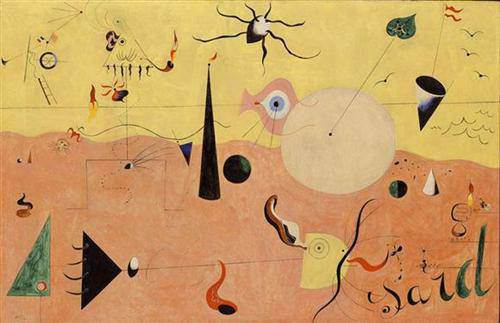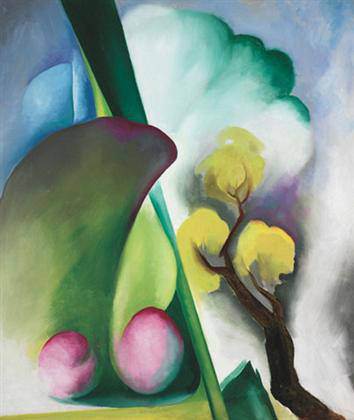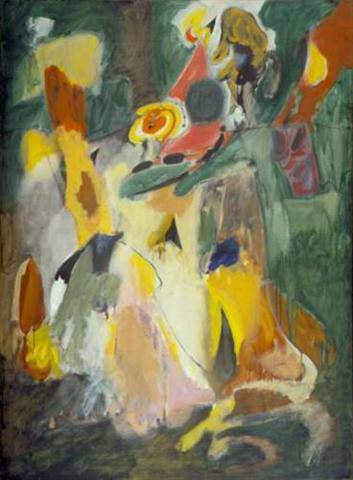Joan Miró · Catalan Landscape (The Hunter)

Joan Miró (Spain, 1893-1983), 1923-24. Oil on canvas, 64.8 x 100.3 cm. (25 1/2 x 39 ½ in). Museum of Modern Art, New York. © Heirs of Joan Miró / Artists Rights Society (ARS), NY
Joan Miró (1893–1983) is one of the most original and iconic of modern masters. Throughout his career, he developed a Surrealist language of colors and symbols that is widely regarded as one of the main influences for Abstract Expressionism.
After moving to Pau Gargallo’s workshop in Paris, Miró was among the group of artists who founded the Surrealist movement in 1924, led by Andre Breton. Breton called him “the most Surrealist of us all”, but actually Miró was never an “orthodox” Surrealist. The comparison between “The Farm (La Masía)” from 1921-22 and another of almost identical subject, ” La Terre labourée” (1923-24), clearly shows the evolution of the artist’s style.
“Catalan Landscape” is an excellent example of Joan Miró’s personal surrealist style, which culminated in the magnificent “The Harlequin’s Carnival”, painted a year later. The two different colors on the background are clearly the sky and the earth. On the left side of the painting we see the figure of the hunter, with a Catalonian beret and a pipe, identifiable only if the viewer knows works such as “Head of a Catalan peasant” (National Gallery, Washington) or “Catalan peasant with a guitar” (Thyssen Museum). At the bottom of the painting is the spine of a sardine, accompanied by the letters “sard” on the right.
“Catalan Landscape” was of great importance in Miró’s career, having a great influence on his series of “imaginary landscapes” (like “Dog Barking at the Moon” or “Landscape, the Hare”) created in 1926-27.
G. Fernández – theartwolf.com
Follow us on:


